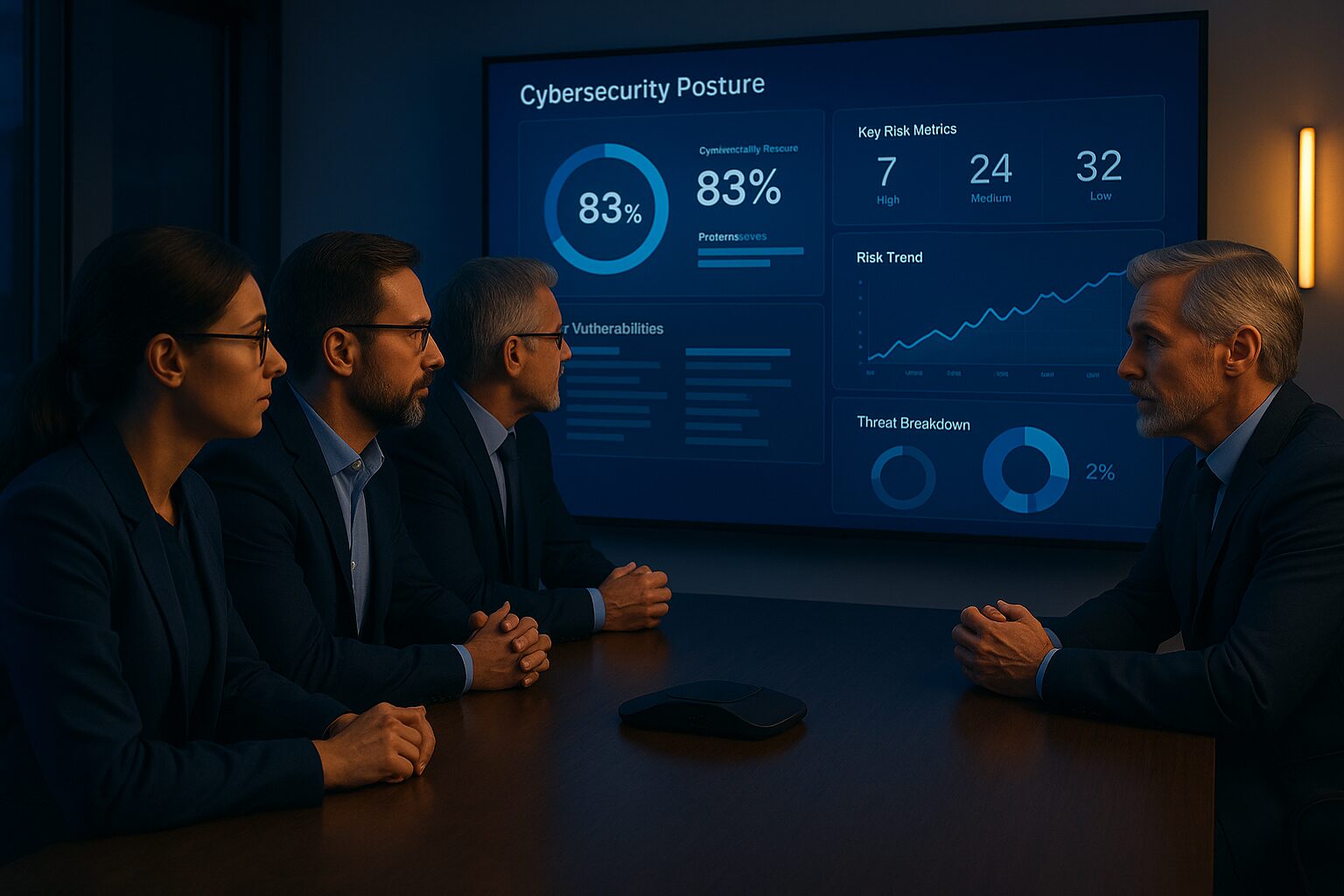When a merger or acquisition is on the horizon, most of the early attention goes to the usual suspects: financials, legal structures, leadership alignment, and brand strategy. IT tends to come later in the process, often only getting the spotlight once something breaks or a delay surfaces.
The truth is, IT has the power to either accelerate or stall the success of a deal. Overlapping systems, unclear data ownership, mismatched infrastructure, and fragile access controls can quietly disrupt momentum if they aren’t addressed early.
This guide is built for decision-makers who want to get ahead of those risks. You don’t need to know the technical weeds, you just need to know what’s at stake, where to look for trouble, and how to approach IT as a strategic lever in the deal, not an afterthought.
The Most Overlooked Player in M&A? Your IT Environment
IT rarely gets a front-row seat during M&A planning. It’s seen as tactical, something to sort out after the paperwork is signed. But once two companies begin to merge operations, it becomes clear just how much is riding on the underlying systems.
If infrastructure isn’t aligned, teams can’t collaborate. If access controls aren’t clear, data can be exposed. If systems are outdated or incompatible, your integration timeline gets pushed, and so does your ROI.
IT isn’t just wiring and software. It’s the nervous system that connects people, data, and processes. Without it, nothing moves forward smoothly. That’s why IT needs to be at the table from the start, helping assess risk, map out overlaps, and build a realistic path to integration.
Bringing IT in early doesn’t just prevent technical delays. It protects the business from operational disruption, security gaps, and costly missteps that could have been avoided with better visibility.
Need Help Mapping IT for Your Next Deal?
Where Most M&A Integrations Fall Apart
Mergers and acquisitions are complex endeavors, and while the strategic vision may be sound, the execution often falters due to overlooked IT challenges. Here are some common pitfalls that can derail integration efforts:
Redundant or Incompatible Systems
When two companies merge, they often bring along a suite of systems that may not align seamlessly. This redundancy can lead to inefficiencies and increased costs. According to Compugen, overestimating synergies without a comprehensive integration strategy can increase IT complexity and introduce cybersecurity vulnerabilities.
Delays in User Provisioning
Timely access to necessary systems is crucial for employee productivity. However, integrating identity management systems can be challenging. Forbes highlights that expediting onboarding and access is one of the top four identity management challenges during M&A integration.
Data Loss or Access Issues
Data migration is a critical component of M&A, and mishandling it can lead to data loss or access issues. Compugen notes that data inconsistency and poor data quality may affect long-term decision-making and customer service.
Hidden Security Vulnerabilities
Merging IT environments can expose the organization to new security risks. Riskonnect emphasizes that managing a plethora of tech tools without a unified security strategy can open the organization up to more risk.
No Unified Support Model for End Users
Without a consolidated support structure, employees may face confusion and delays in resolving IT issues. Establishing a unified help desk and support model is essential to maintain productivity and morale during the transition.
Understanding these pitfalls and proactively addressing them can significantly enhance the success rate of M&A integrations. Engaging with experienced IT professionals or Managed Service Providers (MSPs) can provide the necessary expertise to navigate these challenges effectively.
IT’s Role in Protecting Business Continuity and Compliance
In any merger or acquisition, there’s a lot in motion. Teams are restructuring, systems are being assessed, and timelines are tight. In that kind of environment, IT isn’t just a support function—it’s the foundation for business continuity and regulatory risk mitigation.
Uptime Isn’t a Given During Integration
When IT environments are being merged or migrated, any number of things can go wrong: systems don’t communicate, networks stall, or users lose access to critical tools. If sales teams can’t reach their CRM, or accounting can’t process transactions, business stops moving. IT plays a central role in keeping operations online, even as things shift behind the scenes.
Cybersecurity Gaps Tend to Appear at the Worst Time
During transitions, security often gets unintentionally deprioritized. Access permissions get missed, endpoints aren’t monitored closely, and legacy systems stay live longer than they should. Meanwhile, bad actors know that companies going through M&A are vulnerable. According to IBM’s 2023 Cost of a Data Breach Report, organizations undergoing major IT changes are more likely to suffer breaches with higher-than-average costs. This isn’t theoretical—it’s a pattern.
Compliance Doesn’t Pause for M&A
Whether you’re in healthcare, finance, retail, or manufacturing, compliance frameworks like HIPAA, PCI DSS, the FTC Safeguards Rule, and CMMC don’t take a break while you’re integrating systems. In fact, regulators often scrutinize businesses more closely during periods of change. Failing to preserve compliance in the handoff between systems or teams can lead to fines, lawsuits, or brand damage. IT is the gatekeeper here—ensuring documentation is accurate, data is handled properly, and standards are upheld even in transition.
Secure Access and Data Control Are Non-Negotiable
From access permissions to data transfers between systems, the risk of exposure grows significantly during M&A. Without a tightly managed plan for provisioning and deprovisioning users, companies can easily lose visibility into who has access to what—and why. IT ensures those controls are in place, that data is encrypted in transit, and that no sensitive information gets left behind or left open.
In the thick of an M&A, business leaders are looking at financials, people, and timelines. But if the IT environment isn’t handled with the same level of scrutiny, continuity and compliance are both at risk. This is where IT stops being a department and becomes a strategic safety net.
Let’s Build Your 30/60/90 IT Integration Plan
Why a Strong MSP Is More Than a Support Vendor
When companies hear “managed services,” many think of outsourced tech support or a team that handles patching and ticket queues. But during a merger or acquisition, a strong MSP becomes something entirely different. They’re not just providing IT assistance—they’re acting as infrastructure-level advisors who stabilize the transition and help reduce risk at every layer of the business.
Let’s break down what that really looks like.
M&A-Specific IT Due Diligence: Know What You’re Walking Into
Imagine acquiring a regional distributor with outdated infrastructure, limited documentation, and shadow IT across multiple departments. Contracts with third-party vendors are scattered, and no one can confirm where sensitive customer data is stored.
An experienced MSP conducts IT due diligence during pre-close discovery. They assess both environments and give you a full picture: what hardware and software exists, where security risks live, which vendors are active, and how systems are integrated (or not). You walk into the deal with a clear understanding of what needs to be retained, retired, replaced, or secured—avoiding expensive surprises later.
Vendor and Asset Mapping: Avoid Duplicates, Cut Hidden Costs
In another scenario, post-acquisition, you discover both companies have contracts with five different telecom providers, two different cloud hosting services, and multiple backup tools. You’re paying for overlapping tools but using none of them efficiently.
MSPs don’t just inventory hardware—they untangle the vendor sprawl. They centralize service contracts, identify redundant spend, and consolidate where it makes financial and operational sense. More importantly, they help you avoid being locked into multi-year vendor agreements that no longer fit your post-merger strategy.
Unified Help Desk Support: Keep People Productive, Even in Chaos
It’s Day 3 after closing the deal. Sales teams from both sides are trying to access the CRM. One group has MFA enabled, the other doesn’t. Tickets are flooding internal IT. Response times are inconsistent, and employees don’t know who to call when something goes wrong.
An MSP gives you one help desk across both organizations—with shared SLAs, consistent documentation, and 24/7 support. They make sure everyone has access to the tools they need and that users are supported regardless of which company they came from. That continuity builds trust and keeps teams focused on business outcomes, not tech roadblocks.
Faster Stabilization Across Both Companies
Your internal IT team is working overtime trying to manage email migrations, secure endpoints, and deal with license provisioning—all while responding to everyday support requests. Nothing is getting done fast enough. Integration is behind schedule. Teams are frustrated, and leadership is concerned.
A strong MSP is purpose-built for transition support. They handle the heavy lifting: moving systems into a unified environment, securing access, mapping out shared infrastructure, and hardening security across both networks. Stabilization happens faster because it’s not a side project—it’s a core competency.
Strategic Planning for the First 100 Days Post-Close
Leadership wants to see ROI from the deal in the first quarter. But the IT team is still figuring out how systems talk to each other. You’re burning time and resources trying to answer basic integration questions—let alone plan for growth.
A great MSP acts as a strategic advisor, not just a technician. They provide vCIO-level support, guiding you through a 30/60/90-day roadmap with clear priorities: what to fix now, what to align next, and what to scale as the new entity grows. They help you avoid getting stuck in reactive mode and move toward strategic alignment—faster and with less friction.
A strong MSP is not just a vendor. They are your systems translator, your stabilizer, and your strategic co-pilot during one of the most complex transitions a business can face. They bring clarity to the chaos, reduce pressure on internal teams, and help leadership stay focused on integration outcomes—not infrastructure problems.
What to Evaluate—Before and After the Deal Closes
In the lead-up to a merger or acquisition, attention is often fixed on financial models, legal structuring, and cultural alignment. But the sooner you start asking the right IT questions, the smoother your integration will be.
Here’s a high-level checklist to guide your IT planning, before the deal is signed and long after it’s done:
What systems will overlap? Are both companies using similar CRMs, ERPs, or cloud platforms? What about email, file sharing, or cybersecurity tools? Redundancies are common, but not all overlaps are worth keeping. Deciding what stays and what gets sunset should be a strategic decision, not a rushed one.
Where are the biggest vulnerabilities? Every system carries risk, especially when two IT environments are brought together. What assets are outdated, unpatched, or no longer supported? Are there unknown endpoints, remote access risks, or inherited tools that don’t meet your current security standards? A pre-close security assessment can surface issues before they become liabilities.
Who owns which data? Data ownership can get murky fast. You’ll need clarity on what data is being transferred, who has access to it, and how it’s stored. If customer records, payment data, or protected health information are involved, you’ll need to document ownership and permissions carefully to stay compliant.
How will support be managed across both organizations? When something breaks—who fixes it? Two companies often mean two different support structures, ticketing systems, and points of contact. Without a unified model in place, employee frustration builds quickly. Start mapping out what your help desk and escalation process will look like post-close.
What compliance requirements apply after integration? If either company is regulated under HIPAA, PCI DSS, CMMC, or the FTC Safeguards Rule, the merged entity will be too. Compliance obligations don’t pause during M&A—they compound. Knowing which controls, documentation, and audits are required post-integration helps you stay ahead of risk instead of reacting to it later.
These aren’t just IT questions—they’re business questions. Each one affects your ability to operate, scale, and stay protected after the deal is done. If your team isn’t equipped to evaluate these areas thoroughly, this is where a Managed Service Provider becomes invaluable: they’ve seen the blind spots and know how to close them before they become expensive.
Worried About What Might Break Post-Close?
Conclusion
Mergers and acquisitions are about growth, leverage, and long-term value. But without the right IT foundation, even the most promising deal can stall before it delivers. Integration slows. Systems collide. Data gets lost. Users get frustrated. And instead of moving forward, everyone’s stuck trying to untangle what should have been planned from the start.
IT doesn’t need to be the problem that’s solved last. It can be the asset that makes everything else run smoother—from Day One to Day 100 and beyond.
Whether you’re in early talks, finalizing a deal, or managing the first wave of post-close changes, this is the moment to bring IT into the fold. Not just as a support function, but as a strategic partner.
At Meriplex, we help organizations navigate transitions with less disruption, stronger security, and a clear roadmap. Because when IT is steady, everything else moves faster.



